Parents kept his name Narendra Nath Dutta, he became popular in his nick name ‘Gadai’ in his childhood days. He was born in well-to-do family in Kolkata on 12th January, 1863. His father was a successful lawyer named Viswanath Dutta. He possessed interest in different subjects. His mother was Bhuvaneshwari Devi; and She also had various qualities like profound commitment, bold character etc. Likewise his father and mother, Narendra Nath was also very much talented. He had interest in music and study. After his primary schooling, he completed his graduation from Calcutta University. By that time, he acquired profound knowledge in various subjects – particularly in Western Theory and History. He also had a rare quality of ‘Yogic Disposition’, and he used to practice meditation from his very childhood. He also joined the ‘Brahmo Movement’ for quite some time.
In his younger age, Narendra Nath came to know about Shri Ramakrishna from his English teacher. As he was confounded by so many questions about the very presence of God, and did not get any perfect answer from many other persons; he took a resolution to meet Shri Ramakrishna. One day in the month of November 1881, he went to meet Shri Ramakrishna at the Kali Temple in Dakshineshwar, Kolkata. After meeting him Narendra Nath asked him straight forwardly, “Sir, have you seen God?”
Without a minute’s wavering, Shri Ramakrishna answered, “Yes, I have. I can see Him as obviously as I see you, just in a much deeper sense”. Shri Ramakrishna not only just expelled questions from the brain of Narendra, additionally won him over through his immaculate, sacrificial adoration. What was more significant that time was their relation started as an extraordinary “Guru-Sishya” relationship ever. Perhaps Shri Ramakrishna with his divine power, saw some divine quality in Narendra Nath Dutta. From then onwards, Narendra started going Dakshineshwar regularly, and under the direction of the Guru, made quick advancement on the profound way of spirituality. At Dakshineshwar, Narendra also met numerous young people who were committed to Shri Ramakrishna, and they all got to be close friends.
Similar Topic: Vidyasagar – the great soul of India
Extreme Times:
After a couple of years, two incidents extensively made upset Narendra Nath. One was the sudden demise of his father in 1884, leaving his family in hopeless condition. Consequently, Narendra Nath needed to shoulder the trouble of supporting his mom, siblings and sisters. The second occasion was the ailment of Shri Ramakrishna as he was diagnosed with throat cancer.
In September 1885, Shri Ramakrishna was taken to a house at Shyampukur, and a couple of months after the fact to a leased country house with lands at Cossipore. At these two places the youthful devotees surrounded their Guru with most extreme consideration. In spite of the fact that there was poverty at home, as he was unemployed, Narendra lead his colleagues.
Start of Monastic Fraternity:
Start of a religious brotherhood Shri Ramakrishna ingrained the soul of renunciation and fellowship in these youths. One day he appropriated ochre robes among them and sent them out to ask sustenance. He particularly educated Narendra about the development of the new devout Order. In the small hours of sixteenth August 1886, Shri Ramakrishna left his mortal body. After the Guru’s destruction, all his fifteen youthful supporters started to live respectively in a feeble building at Baranagar in North Kolkata. Under the authority of Narendra, they framed another ascetic crew in 1887 and took the formal promises of Sanyasa, thusly getting new names, Narendra now got to be Swami Vivekananda, in spite of the fact that this name was really expected much later.
Insight of Life:
Attention to Life’s Mission After making the new devout request, Swami Vivekananda heard the voice of his spirit for a more noteworthy mission in his life. While the majority of the pupils of Shri Ramakrishna pondered him in connection to their own particular individual lives, yet Vivekananda thought about the Guru in connection to India and whatever is left of the world. As the prophet of the present time, what was Shri Ramakrishna’s message to the modern world and to India specifically? This inquiry and the attention to his own particular inherent forces urged Vivekananda to investigate the entire world. Thus, amidst 1890, he got the gifts of Smt. Sarada Devi, the celestial buddy of Shri Ramakrishna, referred to the world as ‘Holy Mother’, who was then staying in Kolkata and left Baranagar Math and set out for a long trip to investigate and find the genuine India.
Read: A true determination triumphs
Investigating the Real India:
Amid his travel in India, Swami Vivekananda was profoundly touched by the tremendous poverty and backwardness of the individuals. He was the first religious leader in India to comprehend and transparently pronounce that the genuine reason for India’s ruin was the disregard of the people. The critical need was to give sustenance and other uncovered necessities of life to the starving millions. For this, they ought to be prepared about enhanced agrarian strategies, town commercial enterprises, and so forth. It was in this connection that Vivekananda got a handle on the center issue of neediness in India, which had never pulled in the consideration of social reformers of those days.
On account of hundreds of years of constraint, the abused people had lost the trust in their capacity to progress. The need was to ingrain into their mental preparation, confidence in themselves and for this they required a revitalizing and rousing message. Vivekananda could discover this message in the guideline of the ‘Atman’, the principle of the potential heavenly nature of the spirit, taught in Vedanta, the antiquated arrangement of religious theory of India. He saw that, despite neediness, the people stuck to religion.
In any case they had never been illuminated by the invigorating standards of Vedanta and how to apply them in pragmatic life. Along these lines, the individuals required two sorts of learning, firstly, mainstream information to enhance their financial condition and furthermore, otherworldly information to implant fearlessness and fortify their ethical quality. The test was to spread these two sorts of information among the individuals. Training was the main answer that Vivekananda found.
Requirement for an Organization:
Swami Vivekananda was to complete his arrangements for the spread of training for the fortifying of the destitute; including ladies, a proficient association of conferred individuals was needed. As he expressed later on that he needed to set in movement, a system, which could bring the noblest of thoughts to the doorstep of even the poorest and the meanest. A couple of years after the fact, Swamiji established the Ramakrishna Mission to serve as a part of this system.
The Parliament of Religions:
It was the point at which these thoughts were coming to fruition in his psyche in the process of his wanderings that Swami Vivekananda found out about the World’s Parliament of Religions to be held in Chicago in 1893. His companions and admirers in India needed him to go to the Parliament. He excessively felt that the Parliament would give the proper gathering to present his Master’s message to the world, along these lines he chose to go to America. An alternate reason which incited Swamiji to go to America was to look for budgetary help for his undertaking of inspiring the masses.
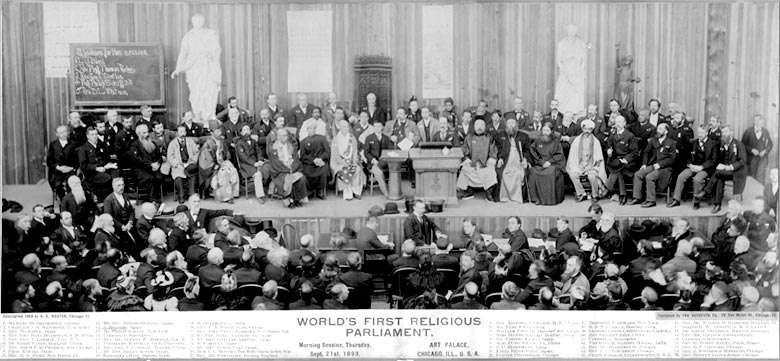
Speech of Swami Vivekananda in the Chicago Parliament of Religions in the year 1893. Image Courtesy – http://centenary.bahai.us.
Speech of Swami Vivekananda at the Chicago Parliament of Religions in the year 1893. Video Courtesy – Youtube.
Swami Vivekananda, then again, needed to have an internal assurance and awesome call with respect to his main goal. Both of these he got while he sat in profound reflection on the rock-island at ‘Kanyakumari’. His Chennai pupils figured out how to gather a few trusts for his visit to America and rest was given by the Raja of Khetri, lastly, Swami Vivekananda left for America to take an interest in the World Parliament of Religions on 31st May, 1893 from Mumbai.
After the Parliament of Religions:
He got to be acclaimed as a ‘Speaker by Divine Right’ and as an ‘Envoy of Indian Wisdom to the Western World’, after his discourses at the World’s Parliament of Religions held in September, 1893 at Chicago, America. After the Parliament, Swami Vivekananda spent around three and a half years for the most part in the eastern parts of USA furthermore in London to spread the idea of Vedanta as honed by Shri Ramakrishna Paramahansa. We can recollect his words on religion, “Religion is the manifestation of the Divinity already in man”.
Arousing of the Countrymen:
On coming back to India in January 1897, he got eager welcome all around. He conveyed a progression of addresses in diverse parts of India, which prompt an awesome development everywhere throughout the nation. Vivekananda’s endeavors were to do the accompanying through his moving and overpowering addresses in blending up religious attention to the masses and producing pride in their legacy.
We cannot forget Swamiji’s teachings,
“Fill the brain with high thoughts, highest ideals place them day and night before you and out of that will come great work.”
Amalgamation of Hinduism with the basic of its orders:
Centering the consideration of instructed individuals on the situation of the mistreated masses, and to expound his arrangements to inspire them by applying the standards of Practical Vedanta, was the motto of Vivekananda. One of his inspiring quotes says,
“Condemn none: if you can stretch out a helping hand, do so. If you cannot, fold your hands, bless your brothers, and let them go their own way”.
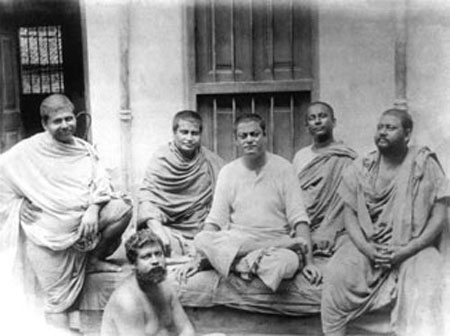
Swami Vivekananda with other shyas of Shri Ramakrishna. Image Courtesy – http://www.patheos.com.
Establishment of Ramakrishna Mission:
Promptly in the wake of returning over to Kolkata, Swami Vivekananda fulfilled a standout amongst the most vital assignments of his main goal. He created the Ramakrishna Mission on 1st May 1897, an establishment to engender Practical Vedanta and to do different manifestations of social administration – such as running health care centers, educational institutes, lodgings, rustic advancement focuses and so on. The Ramakrishna Mission also started mammoth tasks of relief work for casualties of seismic tremors, violent winds and different disasters in diverse parts of India and different nations, with the help of people. In Swamiji’s words,
“Look upon every man, woman, and everyone as God. You cannot help anyone, you can only serve: serve the children of the Lord, serve the Lord Himself, if you have the privilege”.
Belur Math – The image of solidarity of all religions:
In ahead of schedule 1898, Swami Vivekananda obtained an enormous plot of arrive on the western bank of the river Ganges, at a spot known as ‘Belur’, to fabricate a religious community as a changeless territory for the ministers, open to all men with no segregation of religion, race or rank. He got it enlisted as ‘Ramakrishna Math’ following two years. Here, Swamiji perceived another, all inclusive example of religious life which adjusts antique dedicated standards to the states of current life, giving equivalent significance to individual illumination and social administration.
Read: Dr. B. R. Ambedkar – a true fighter against caste discrimination in India
Supporters:
Numerous individuals in the West were affected by the life and message of Swami Vivekananda. Some of them even turned into his pupils or dedicated colleagues. Among them, a portion of the names that may be uniquely said are of Margaret Noble (later known as ‘Sister Nivedita’), Captain and Mrs. Sevier, Josephine McLeod and Sara Ole Bull, and so forth. Sister Nivedita committed her life for the instruction of young ladies in Kolkata. Some of his Indian trains likewise joined Ramakrishna Math and got to be Sanyasis.
Last Days:
Amid his second visit to the West in June 1899, he invested the majority of his time on the west bank of USA. He conveyed numerous addresses there and came back to ‘Belur Math’ in December 1900 and spent rest of his life in India, moving and controlling individuals, both devout and lay. Consistent work, particularly offering addresses to propel individuals, had an unfavorable impact on Vivekananda’s health and as a result of that his health began decaying. Ultimately, at the night of 4th July, 1902 he died. Before his ‘Maha Samadhi’, he had kept in touch with a Western supporter that, “It might be that I should think that it great to get outside my body, to cast it off like an exhausted article of clothing. Yet I might not quit working and continue moving men all over the place until the entire world should realize that it is blended with God”
We must remember his wise saying,
“Whatever you think, that you will be. If you think yourselves weak, weak you will be; if you think yourselves strong, strong you will be; if you think yourselves impure, impure you will be; if you think yourselves pure, pure you will be.”
Reference: http://www.patheos.com, http://rishikajain.com, http://www.swamivivekanandaquotes.org and Youtube.

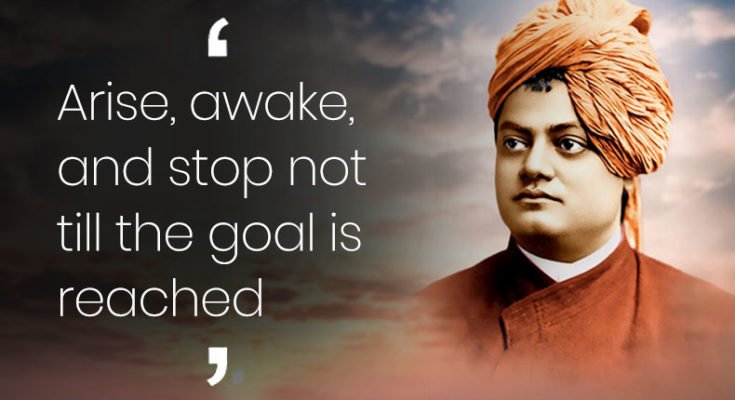

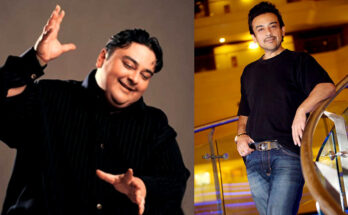
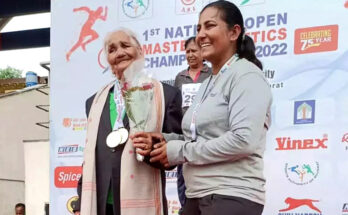
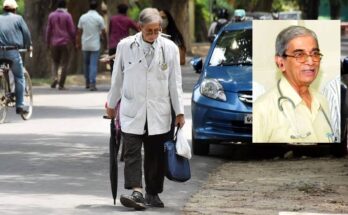
Thank you for another informative website. The place
else may just I get that type of information written in such a perfect way?
I have a venture that I’m simply now operating
on, and I have been at the glance out for such info.